Amending staff conditions is an extremely common practice within organisations, and yet it is still quite a tedious task to complete. To get these changes set in motion, approved and implemented, despite how common the practice is, can take hours or even days, but it shouldn’t have to.
You need to be careful trying to rush this process however as there are federal, state and local laws that regulate the management of people in business, and as the HR Manager, you are responsible for ensuring your organisation remains compliant with these laws. There are laws in place that mean employers cannot change the fundamental staff conditions of their employees without approval. Our ‘change of staff conditions’ feature allows you to stay compliant in this matter without taking up so much of your time, while also saving you in the initial set-up and implementation of this change.
What is ‘change of staff conditions’?
‘Change of staff conditions’ refers to the adjustments made the contract of an employee. These changes could be to do with their salary, working hours, superannuation or even changing the parameters of their job description.
The process of making these changes can be time-consuming as it requires you to update the employee’s information across all databases. On top of this the process demands managerial and employee approval to become effective which can often become a long drawn out process. No longer does this have to be a tedious process however, let me show you how this process can now be done in under a minute! Let’s run through the simple 8 step process of our change of staff conditions feature within the platform.
The 8 step process:
1. Open the org chart
Or profile library if you do not currently use the org chart.
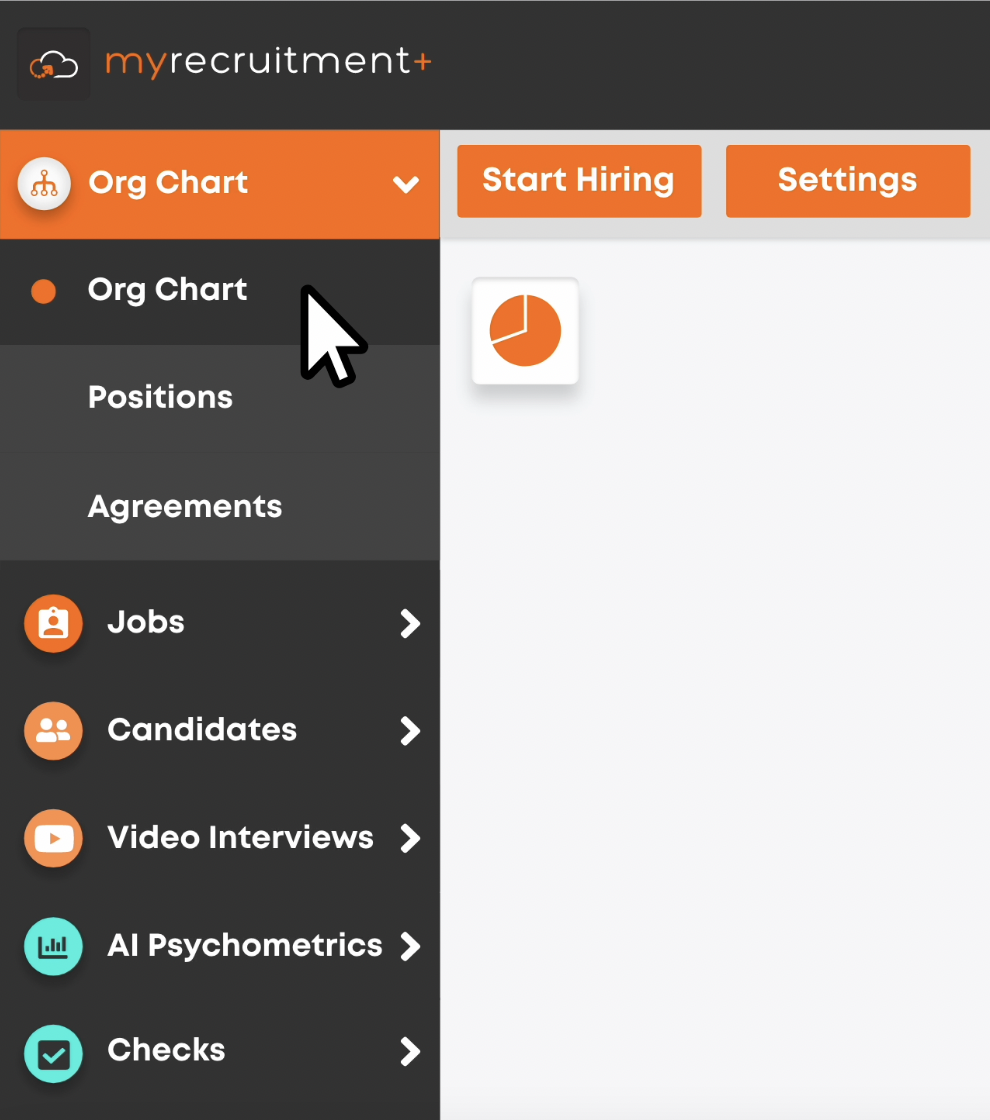
2. Select employee
Click on the node or profile of the employee you wish to change the conditions of.

3. Press the ‘change of staff conditions’ icon
This is located above their node. Here you will also select the appropriate workflow approval needed for the back end of this process.
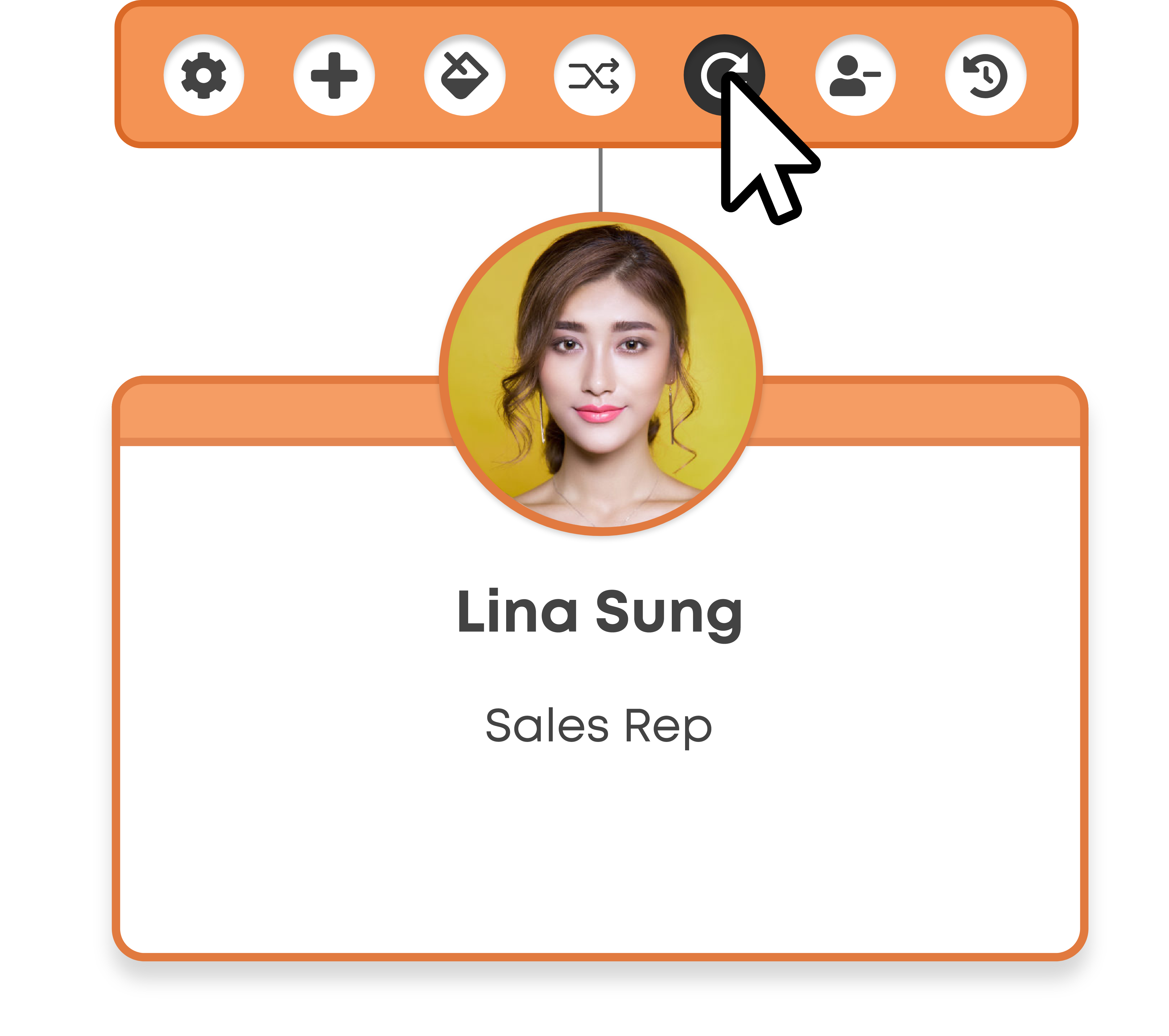
4. Fill in proposed changes
A form will pop up showing side by side the employee’s current conditions and the proposed staffing conditions. Their current staff conditions will be pre-populated by the system using the information stored in their employee profile. Next to this there will be a series of vacant boxes for you to make the necessary amendments to.
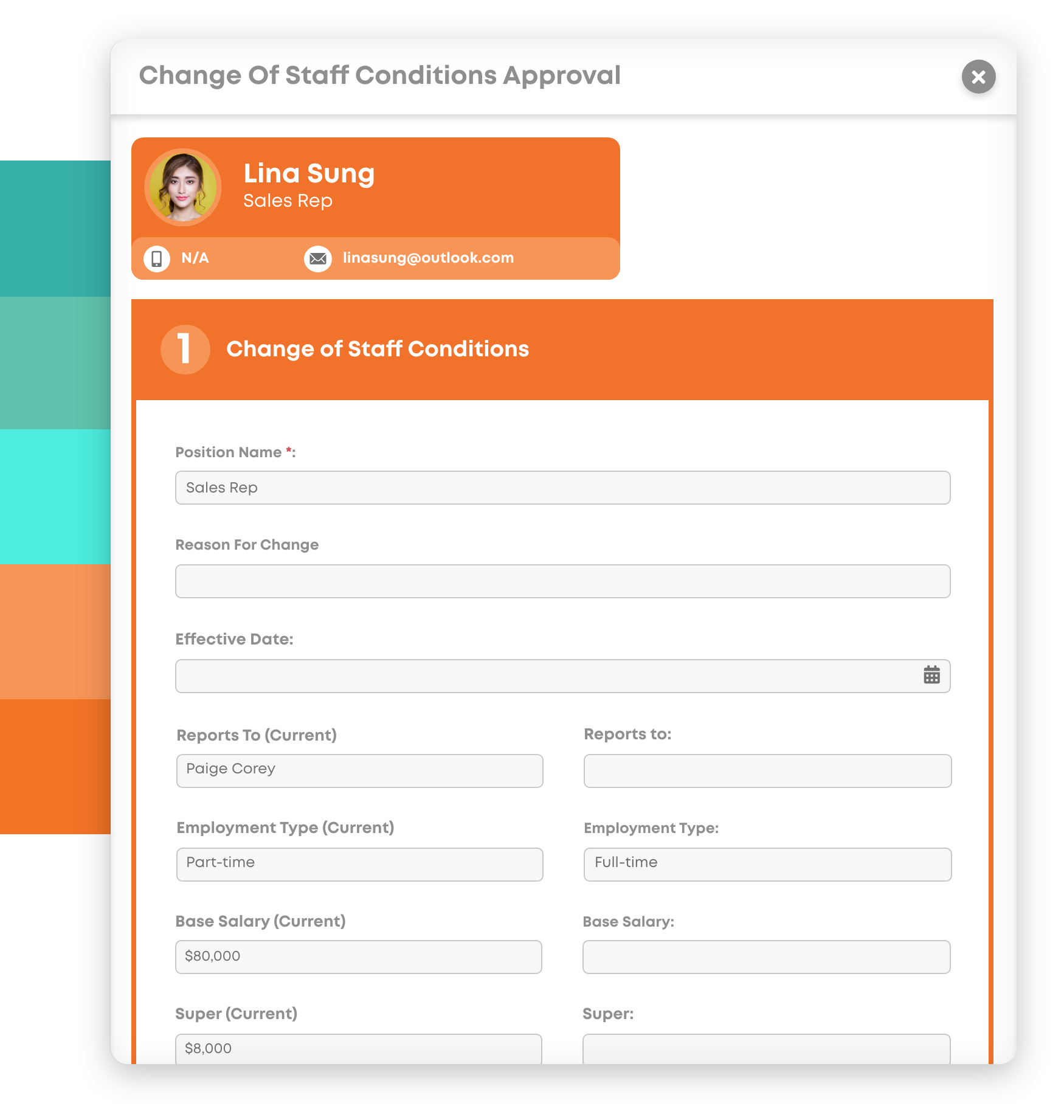
5. Propose effective date
You will be asked in this same form to cite when these proposed changes will become effective. This could be in a few days, a few weeks or even a few months from now it’s entirely up to you.
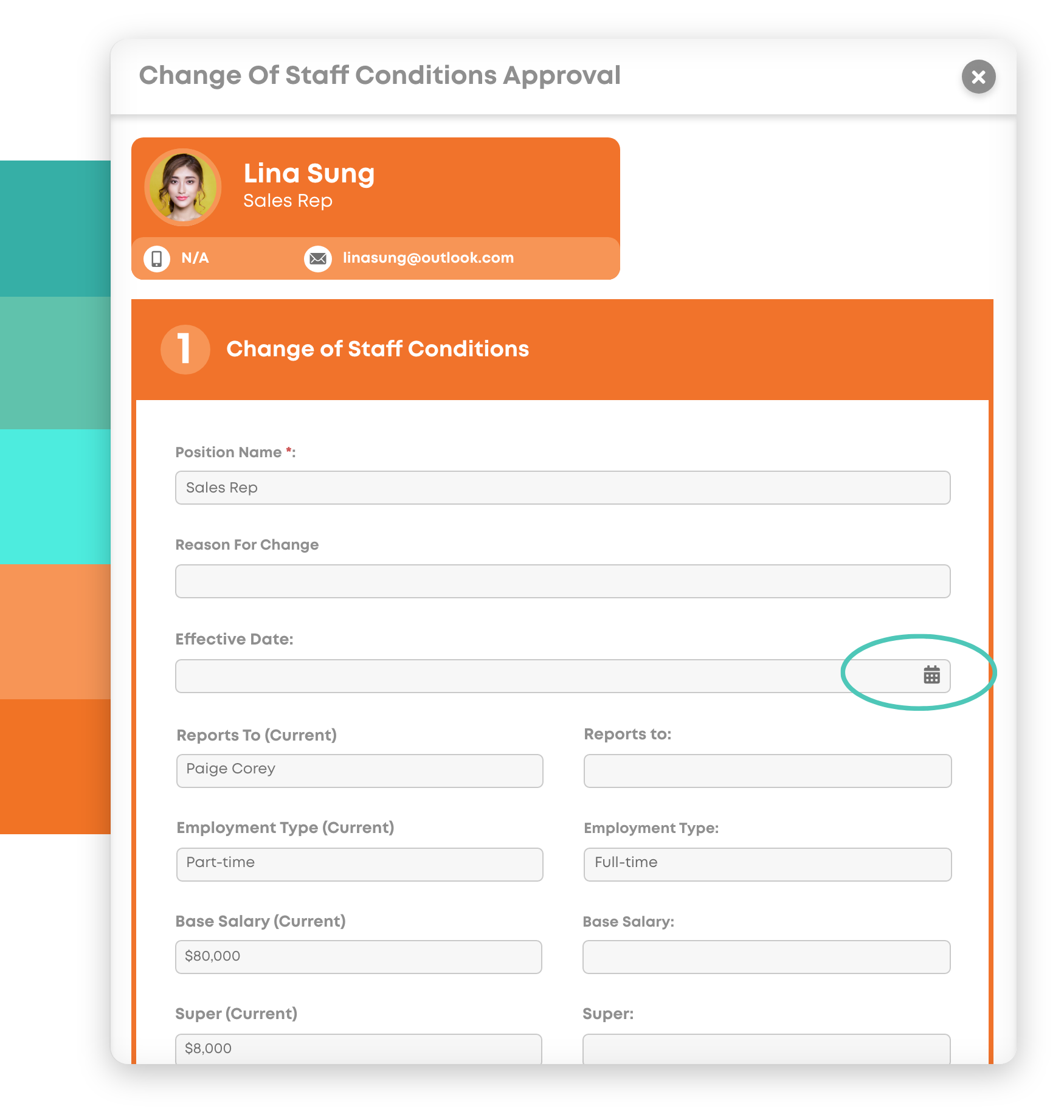
6. Submit for workflow approval
Once you have finished creating this form, you simply submit it to be approval. Automatically the form will be sent to the necessary managers for their approval.
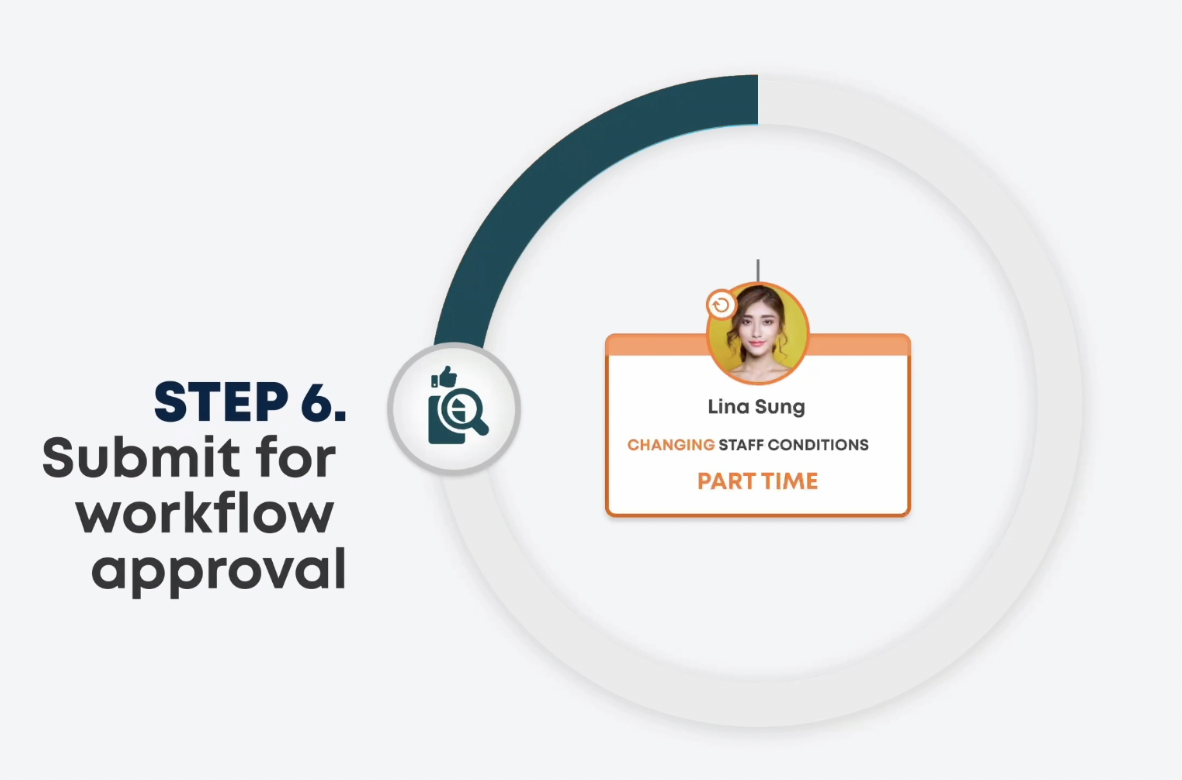
7. Approval request sent to the employee
After the necessary managers have signed off on the changes you have proposed, the employee will be sent these documents for approval.
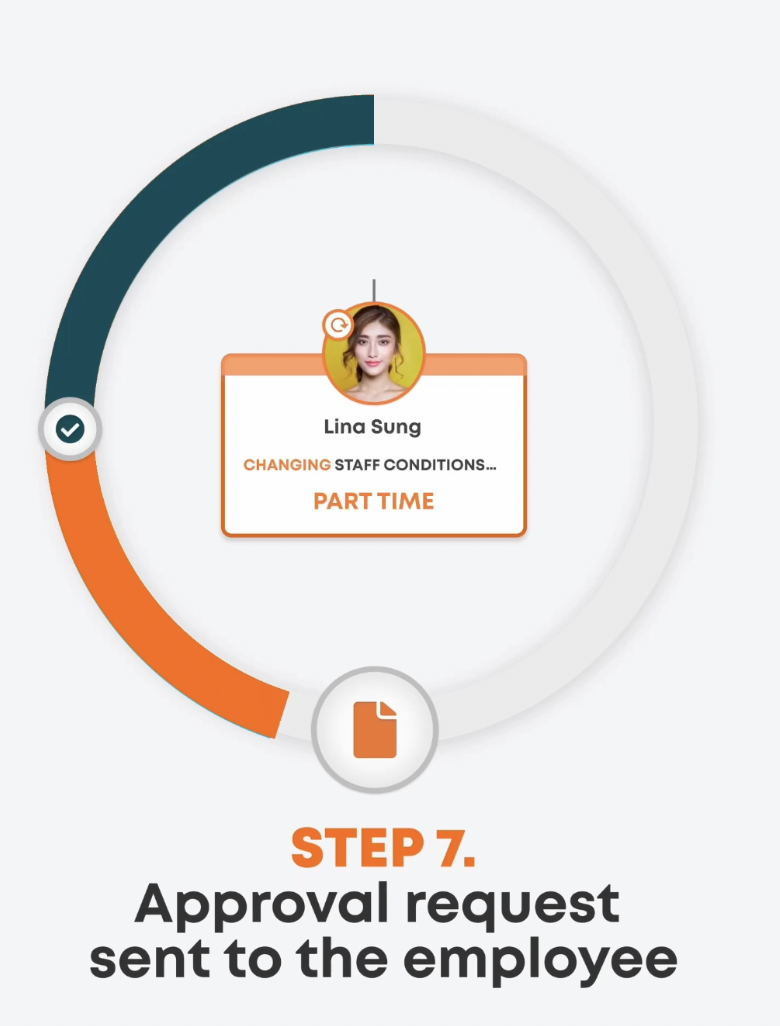
8. Employee signs off
When the employee has signed off, the changes will become effective as of the selected date. The system will automatically change these details in the employee’s profile and needs no further action from you.
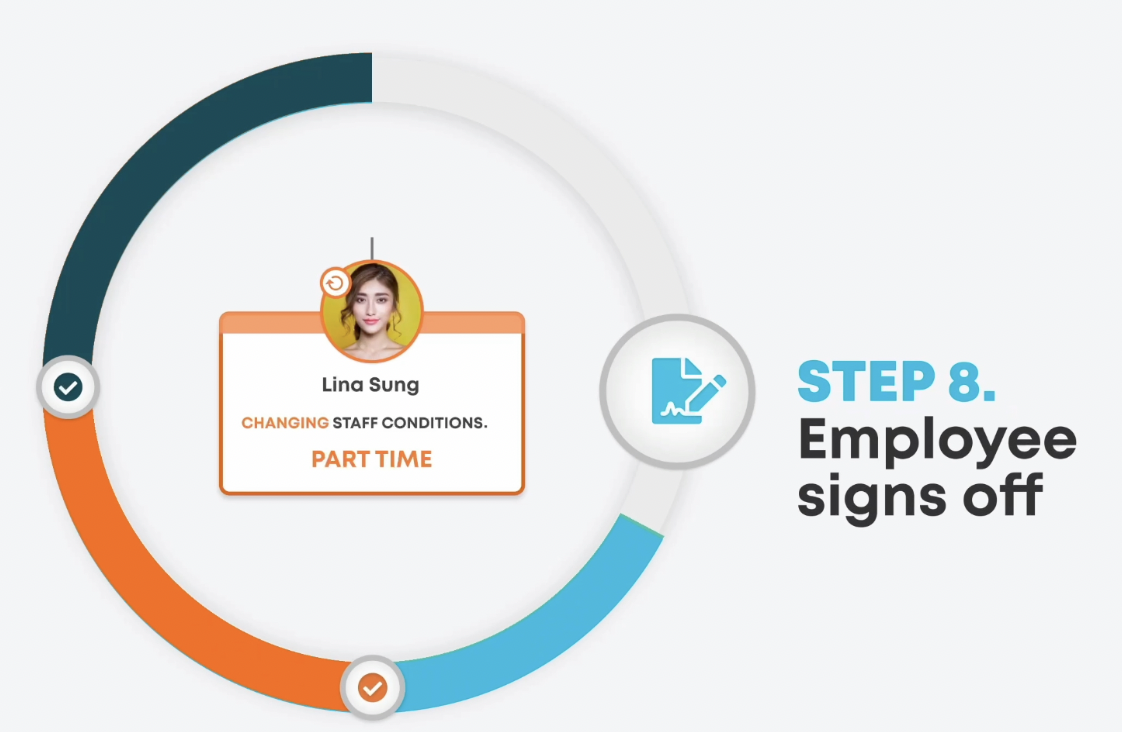
And that is it you’ve completed this previously tedious task in minutes. As opposed to the hours or even days this process may have previously taken you end-to-end. This would leave you more time to do your other important HR work.
Why should you be spending hours on a process that could instead take minutes? Start valuing your time more – it is the key to creating an efficient and productive workplace.

